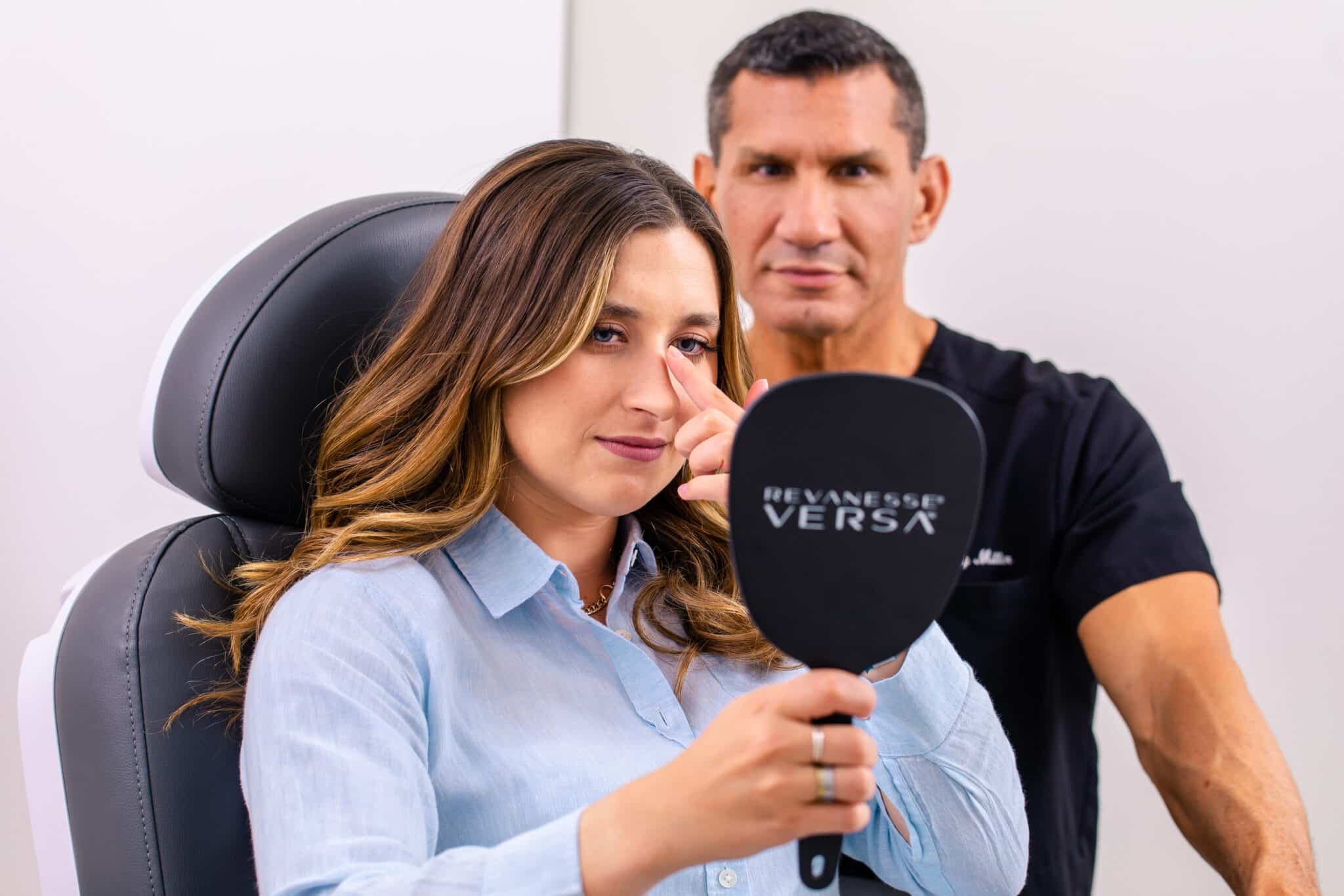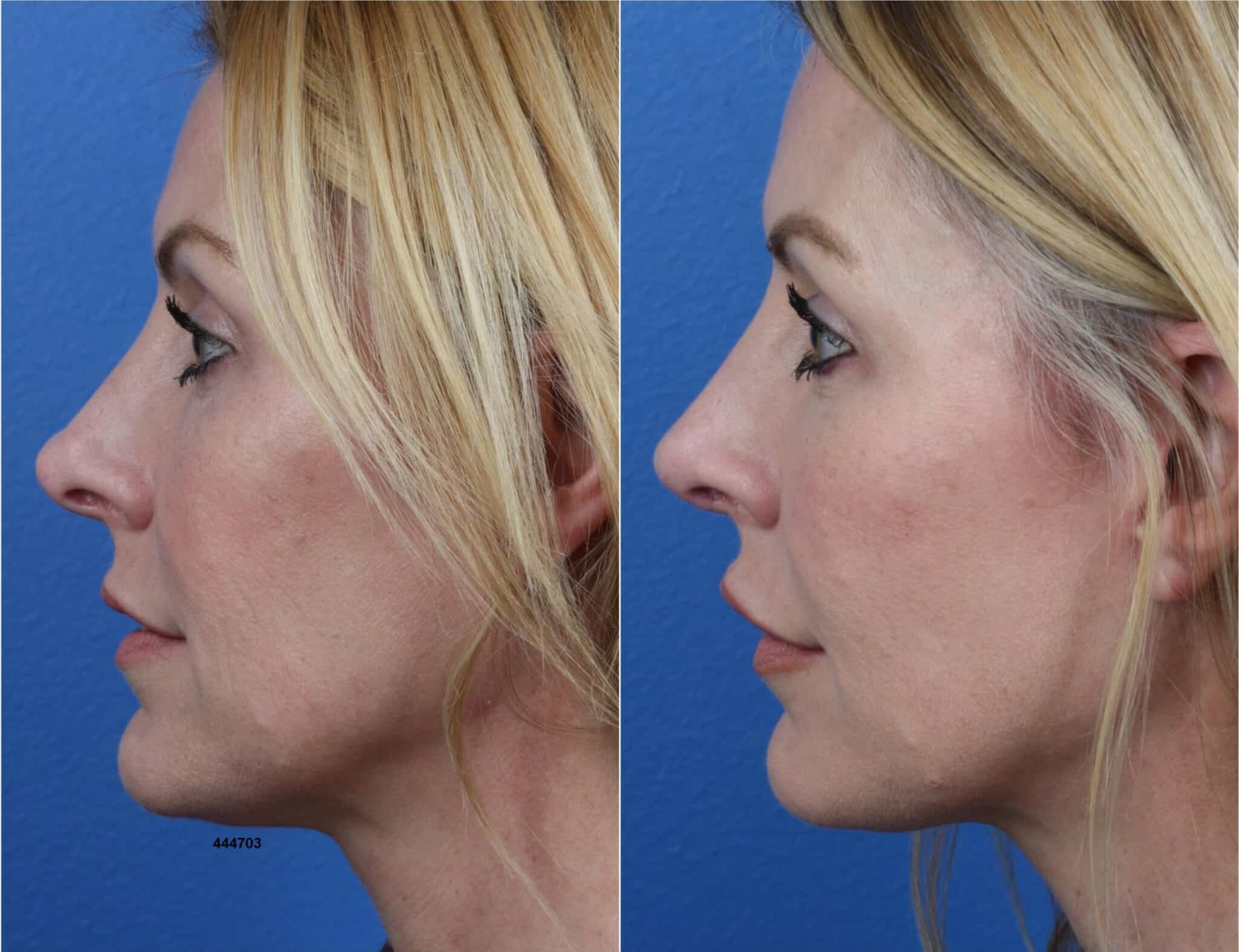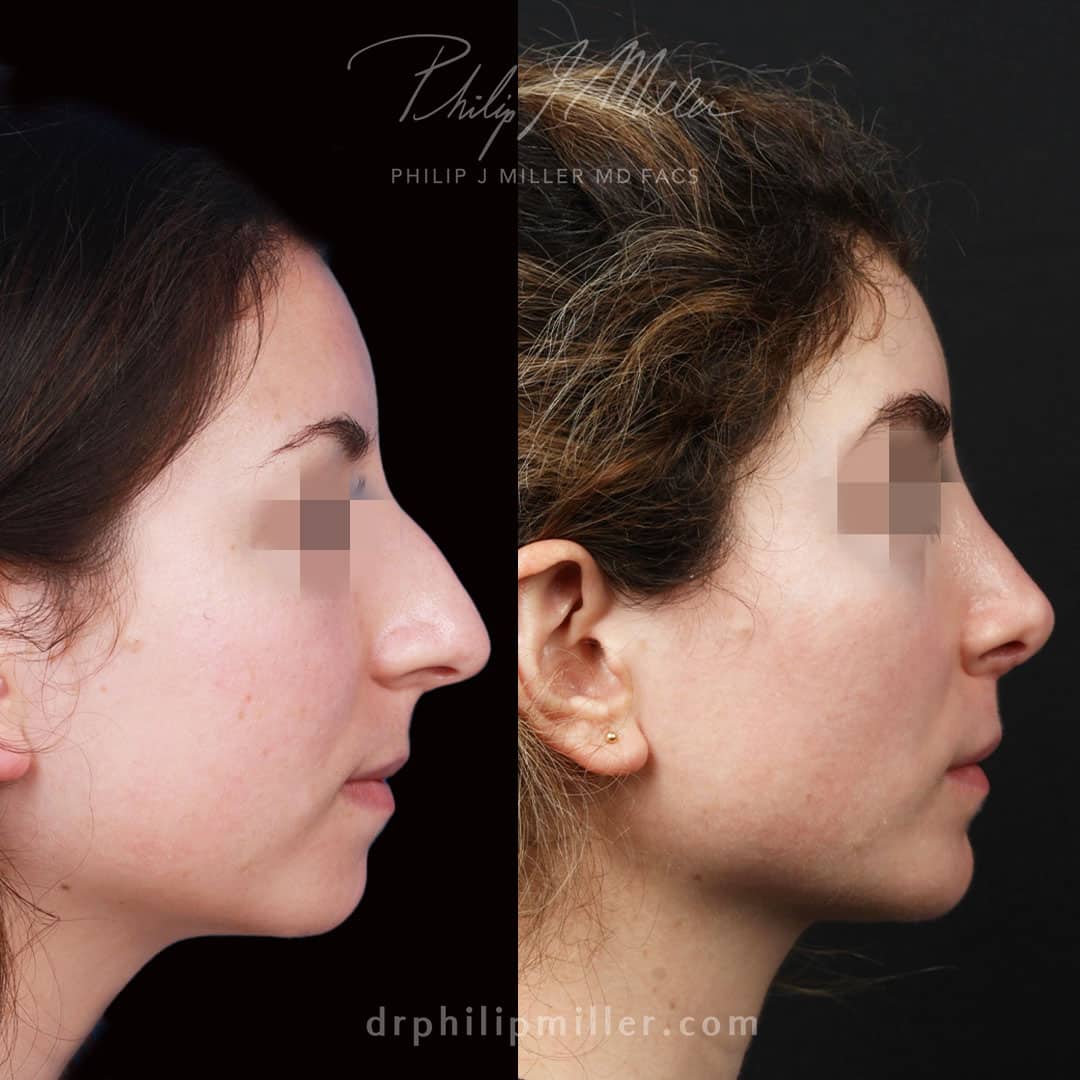Revision Rhinoplasty in New York City
Performed by New York's #1 double board-certified revision rhinoplasty specialist surgeon with over two decades of experience and voted among the Best Doctors in America for 10+ years.


Revision Rhinoplasty Photos Before and After
Are you unsatisfied with the results of your previous nose surgery? Get the outcome you deserved the first time around with revision rhinoplasty. Dr. Philip Miller, a renowned expert in complex cases, can help correct issues from previous surgeries while delivering natural-looking results.

Why Choose Dr. Miller?
Dr. Miller is recognized as a leader in revision rhinoplasty, specializing in correcting complex cases with innovative techniques. Choosing Dr. Miller as your revision rhinoplasty surgeon ensures you receive:
- Expert care from a surgeon with over two decades of experience and a high success rate in revision procedures
- The unique NatraLook® Process that improves your experience and delivers results unique to your needs
- Advanced computer imaging technology to preview your expected results
- Treatment by a surgeon voted among the Best Doctors in America for the past 10 years
- Access to a state-of-the-art surgical facility in Manhattan
Your Revision Rhinoplasty Procedure
- Request your consultation with Dr. Miller, and our team will respond promptly within 24 hours
- During your consultation, Dr. Miller will use his proprietary NatraLook® Process to understand your aesthetic goals
- See your results before the procedure begins; thanks to advanced computer imaging technology
- Enjoy convenient scheduling and detailed pre-operative instructions
- Undergo the surgery in 2-3 hours, and our team will monitor you before you return home
- Get assistance with transportation to your home or hotel if needed

Revision Rhinoplasty Frequently Asked Questions
Schedule ConsultationWhat is revision rhinoplasty?
Revision rhinoplasty is a secondary surgical procedure performed to correct unsatisfactory results from a previous nose surgery. This specialized procedure addresses both aesthetic concerns and functional issues that may have arisen from the initial procedure. As a complex surgery, it requires extensive experience and expertise to navigate the changes from the previous procedure while achieving the desired results.
When is revision rhinoplasty necessary?
Revision rhinoplasty becomes necessary when the results of an initial rhinoplasty don’t meet expectations or when complications arise during healing. This might occur due to unexpected tissue healing, surgical complications, or communication gaps between the patient and their original surgeon. Sometimes, breathing problems develop after the first surgery or the aesthetic outcome may appear unnatural or asymmetrical. Dr. Miller carefully evaluates each case to determine if revision surgery is the appropriate solution for addressing these concerns.
How much does revision rhinoplasty cost in New York City?
Revision rhinoplasty typically involves higher costs than primary rhinoplasty due to its increased complexity and the additional expertise required. For the most accurate pricing we recommend scheduling a consultation with Dr. Miller’s office, where we can provide a detailed breakdown based on your specific case.
What are the common issues corrected by revision rhinoplasty?
Revision rhinoplasty can address a wide range of concerns that may have resulted from previous surgery. A common issue is the “pinched tip” appearance, where excessive cartilage removal has led to an unnatural narrowing of the nasal tip. Some patients experience a “short nose” deformity, requiring cartilage grafting to restore proper proportions.
Dr. Miller also frequently corrects crooked noses using his unique technique, which he has presented at rhinoplasty conferences nationwide. Additional concerns may include bridge irregularities, breathing difficulties, and excessive scar tissue formation. Each case is unique and requires a customized approach to achieve optimal results.
What does the procedure involve?
As one of the best rhinoplasty surgeons in NYC, Dr. Miller performs revision rhinoplasty using either an open or closed approach, depending on the complexity of your case. The open approach, while utilizing a small incision between the nostrils, provides better visibility for complex corrections.
During surgery, Dr. Miller may need to reconstruct nasal support using cartilage grafts, which can come from various sources including the septum, ear, or rib. The procedure might also involve correcting functional issues like a deviated septum or nasal valve collapse. Throughout the surgery, Dr. Miller focuses on creating natural-looking results while improving both the appearance and function of your nose.
Who is a candidate for revision rhinoplasty?
Ideal candidates for revision rhinoplasty are individuals who have fully healed from their initial surgery, typically waiting 12-18 months to allow all swelling to resolve. Candidates should be in good overall health and have realistic expectations about what the procedure can achieve. It’s essential that your nose has reached full development, which typically occurs in the mid to late teens. During your consultation, Dr. Miller will evaluate your unique situation, including the changes from your previous surgery, to determine if you’re a suitable candidate for revision rhinoplasty.




















